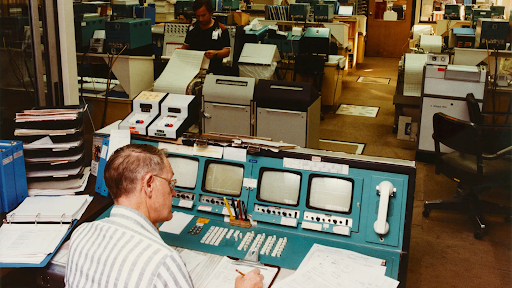Dean KK4DAS and I were talking to Mark, a new homebrewer. After we sang the praises of the Michigan Mighty Mite, Mark asked us a good question: How does it really work?
I guess the starting point for analysis is the Barkhausen criteria (that Pete N6QW taught us): essentially you need enough feedback to overcome losses in the circuit, and this feedback has to be in phase with the signal at the input. The MMM is clearly oscillating, so the question becomes, "How does this very simple circuit meet the Barkhausen criteria?"
Here goes:
Even though it is a very simple circuit, it is worthwhile to separate out the things that it has to do:
1) It needs to set the AMOUNT of feedback. This is done by the tap on L1. Too low down on the coil, and it is too close to ground through the .05 uF capacitor (not enough feedback). Too high on the coil and you get too much feedback. This is like an inductive voltage divider.
2) It needs to make sure that this feedback is in phase with the input signal. Positive feedback. Q1 is an inverting amplifier. So it supplies 180 degrees of phase shift. As the signal at the base goes more positive, the signal at the collector goes more negative, and vice versa. But we need an additional 180 degree shift to bring the output signal in phase with the input signal. Here is the key: The crystal provides the other 180 degrees of phase shift. See
I tested this: A 3.579 MHz crystal does provide the needed phase shift: It introduces a shift of about 190 degrees. Check out this very cool picture. The two scope probes are looking at the input and the output of the 3.579 MHz crystal with 3.580 MHz frequency coming from my HP sig gen.
Click on the picture for a better view.
3) It needs to filter out other signals -- the 365 pf variable cap resonates with L1 at around 3.579 MHz. This results in maximum circulating current through L1 at this frequency.
4) It needs to match impedance to the antenna. L2 wound over L1 forms the secondary of a transformer and efficiently moves the energy from the MMM to the antenna. Think about the gears on your bike.
The 10k resistor biases the base of the transistor, keeping it on. The 27 ohm resistors limits the current through the transistor, preventing it from burning up. Note: the 27 and 10k resistors should NOT be connected directly to each other. There is no dot in the schematic. This causes some confusion among builders.
The .05 uF capacitor does two things: It grounds the L1/365pf tank circuit for RF (but not for DC). It is less than 1 ohm at 3.579 MHz. And it helps reduce (smooth out) key clicks (very sudden on-off changes in the oscillation).







